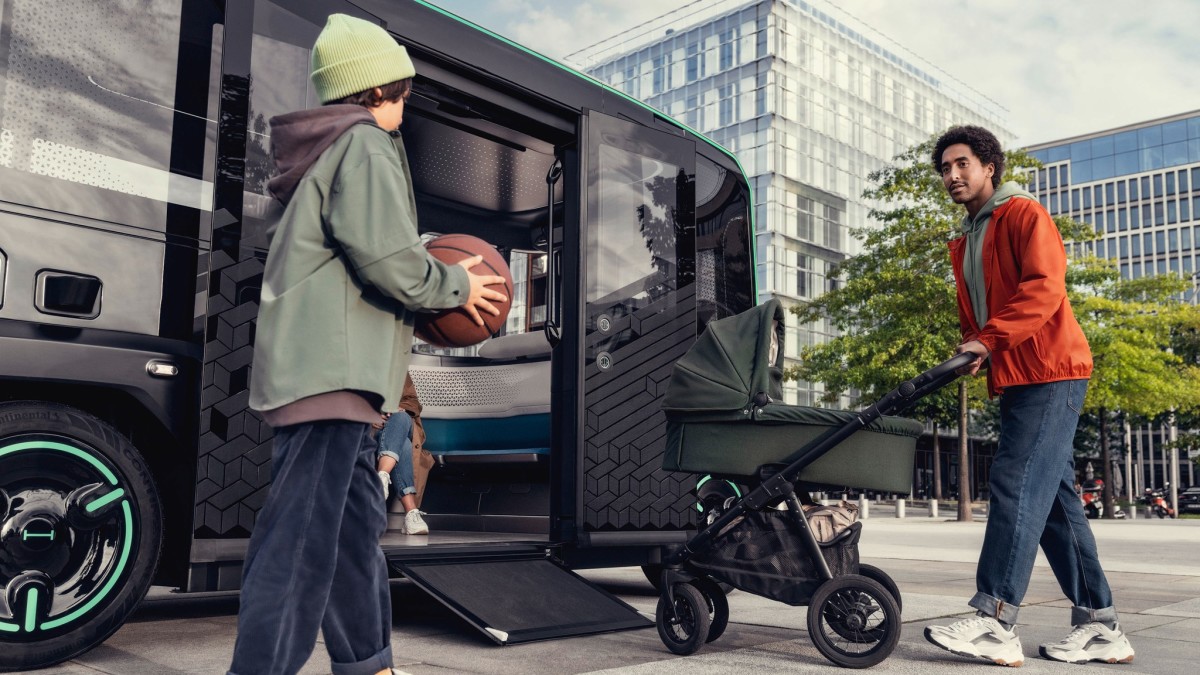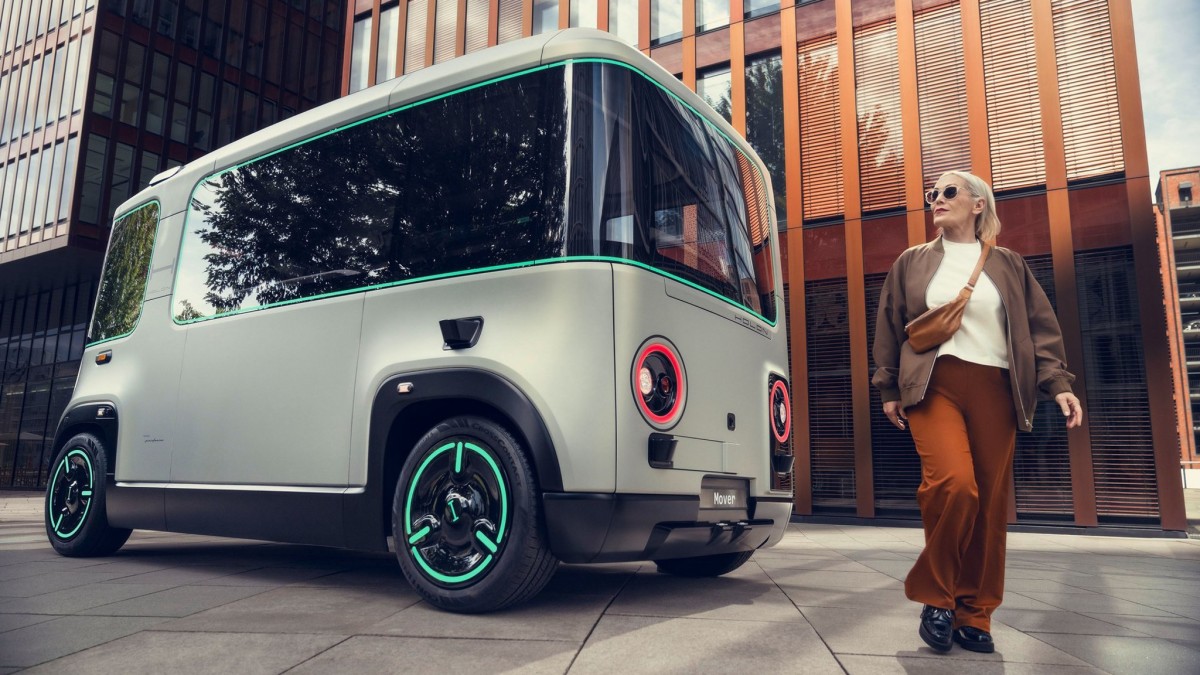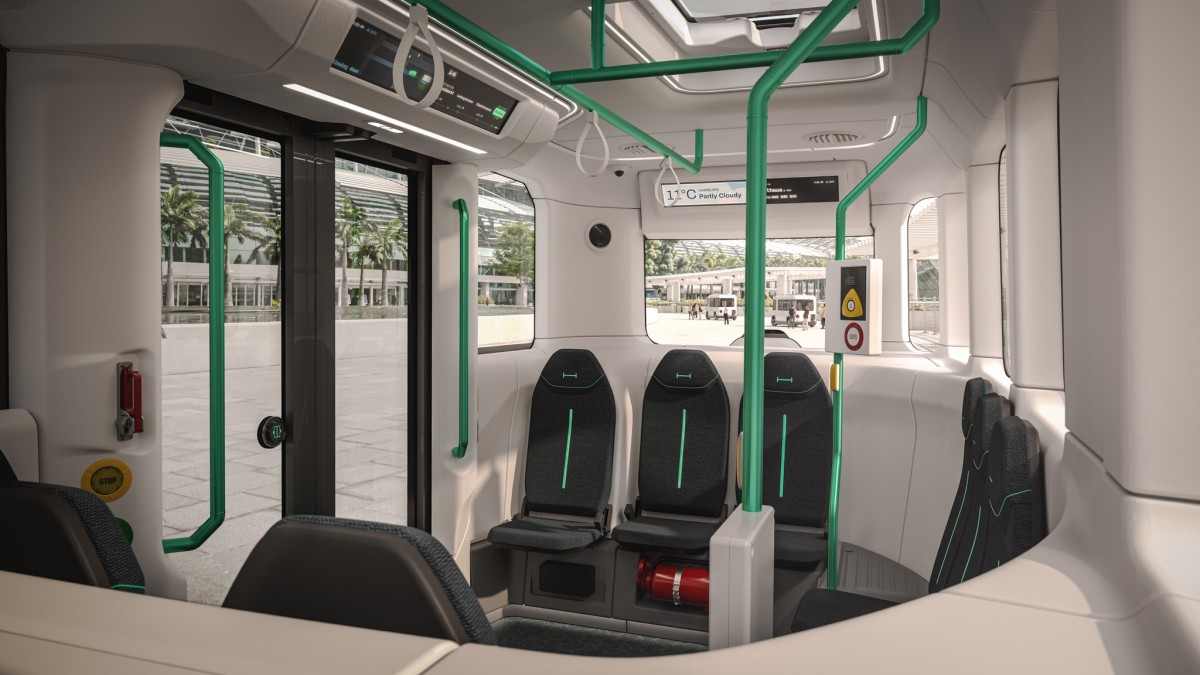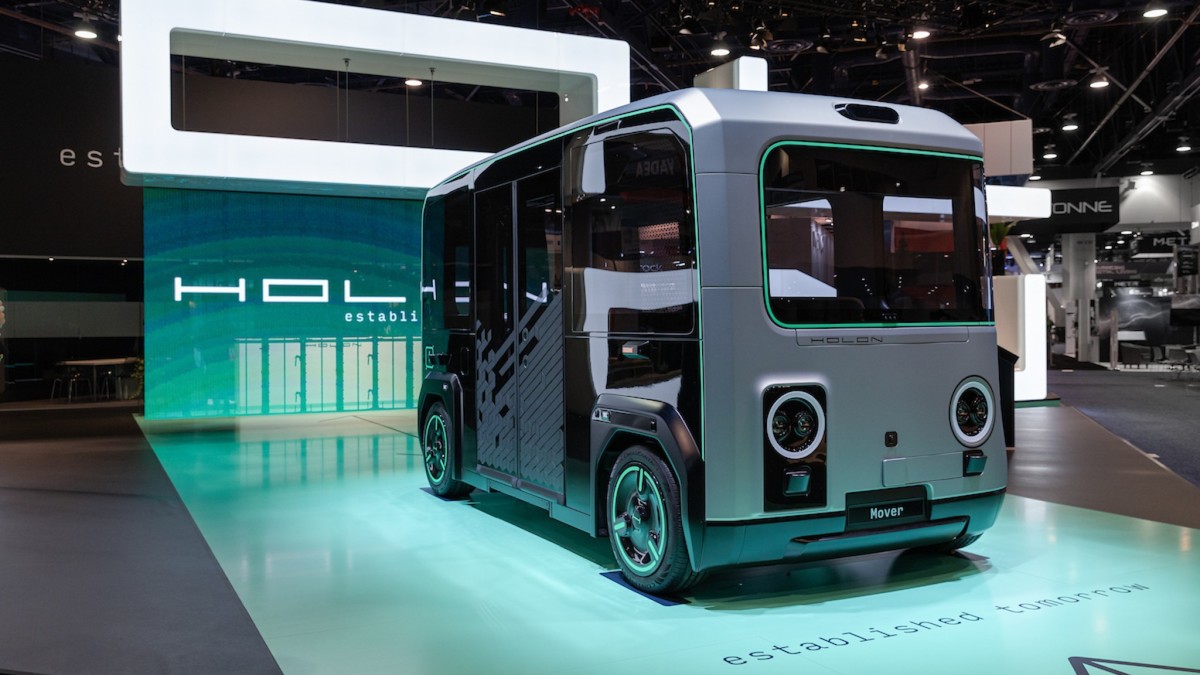Lyft has officially announced it will add autonomous shuttles to its ride‑hailing network by the end of 2026, partnering with German supplier Benteler and its mobility offshoot Holon to deploy fully self-driving electric minibuses across key U.S. cities and airports.
This isn’t just a flashy experiment. It’s the next major step in Lyft’s push to expand its autonomous vehicle (AV) presence, and it’s being positioned as a scalable solution for everyday, shared mobility.

A Shuttle Built for Purpose
The Holon Urban is more than just a concept sketch. It’s a fully engineered electric vehicle built from the ground up for autonomy. With no steering wheel or pedals, this 15-passenger shuttle (nine seated, six standing) runs on Mobileye’s Level 4 autonomous platform, meaning it can operate without human intervention in specific, geo-fenced environments.
Lyft has already partnered with Mobileye and May Mobility to broaden its AV efforts, as part of a long-term strategy to integrate autonomous ride-hailing directly into its app-based service model. These partnerships were confirmed late last year, forming a foundation for the upcoming Holon deployment.

Production, Rollout, and U.S. Assembly
Production is scheduled to begin in 2025, with deployment to follow in late 2026. Units will be assembled at a new facility in Jacksonville, Florida, allowing Lyft to dodge some of the tariff and logistics headaches that come with overseas manufacturing.
The shuttles will operate through the existing Lyft app, letting users book rides like any standard Lyft service. According to Benteler, the goal is to deploy thousands of shuttles globally over the next few years, with Lyft leading U.S. operations.

Strategy vs. the Competition
Lyft’s model here is clear: don’t build, don’t own — partner and scale. This stands in sharp contrast to rivals like Waymo, which operates its own fleet, or BMW, which recently backed away from lofty self-driving promises as costs and development timelines spiraled out of control.
Uber, meanwhile, continues to dip in and out of autonomy. While robotaxis remain in its sights, its AV development strategy has been fragmented, pivoting from in-house efforts to outside partnerships after costly failures.
Lyft’s more cautious, partner-first approach appears to be winning favor among analysts — especially in light of recent findings that many U.S. rideshare users are growing impatient with current service reliability and customer support. Offering a dedicated, predictable autonomous shuttle experience might just be the answer.

Regulatory and Public Hurdles Ahead
Lyft insists it’s engaging early with local communities and regulators to ensure a smooth launch, especially in cities where shuttles will share the road with traditional vehicles.
Still, AVs remain a divisive issue — both politically and culturally. And as the top 10 states for rideshare complaints show, public tolerance for glitches or delays is wearing thin.
But this isn’t some moonshot. Lyft is betting that a small, reliable fleet of consistent, driverless shuttles might win over more hearts than flashy robo‑sedans or half-baked ride-hailing bots.